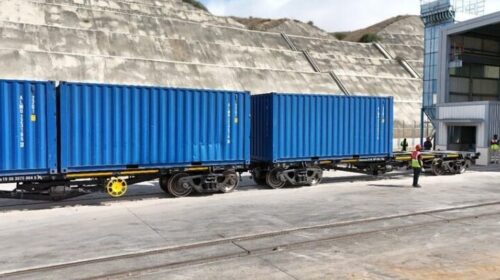Why Mine Sites Are More Likely To Be Behind Plan Than Ahead Of Plan
Author, Mark Bowater is a Mining Engineer, Mine Scheduler, Mine Designer and Company Director from Australia
It is noticeable that short term mine plans are much more likely to underperform than overperform. Considering probabilistic planning, P50 input assumptions, does not result in a plan with P50 outputs.
P50 means a probability of 50%, so P50 input assumptions, such as equipment productivities or utilized time, means there is a 50% probability that the equipment will achieve that assumed production level. Whereas, a P50 output means that there is a 50% probability that the plan as a whole would be achieved, which is usually assessed by whether ore targets are achieved.
These concepts might be obvious to the mine planners who work with them every day. But unless the executive team responsible for decision making and the running of the mine are aware of these concepts and understand them, then there is minimal impact. Thus, this article is targeted towards the executive team than it is for mine planners.
Does P50 in equal P50 out? Well there is a significant contributor to that question and it is something that is rarely discussed in mine planning circles. The problem is ‘slippage’. Slippage arises when a task has multiple dependencies, that is the task is dependent on more than one other task finishing before it can start (or be finished).
It is rare in mining schedules that a task is not dependent on at least two previous tasks. For example, if we are going to excavate Block B, the excavator that is allocated to this task must finish digging the previously scheduled block, Block A in this example, before it’s available to dig Block B. This is known as a resource dependency, that is it depends on a resource being available. But for the excavator to dig Block B, it must also be blasted, so the blast crew must have blasted Block B. This is known as a task dependency, another task in the sequence must be finished first.
Why are multiple dependencies such an issue? The following discussion shows why.
Let’s take the example above, in real life, we’re not going to finish the relevant tasks exactly on time – that only happens in our deterministic plans! Each of these tasks is either going to run early or late, if we’ve chosen P50 for our input assumptions, then there is the same probability of running early as there is of running late. So we have four possible scenarios:
1. Digging Block A finishes early (50% probability) and blasting Block B finishes late (50% probability). This option has a 25% probability overall and results in Block B excavation starting late, because it wasn’t blasted.
2. Digging Block A finishes early (50% probability) and blasting Block B finishes early (50% probability). This option has a 25% probability overall and results in Block B excavation starting early because it is blasted and the digger is available.
3. Digging Block A finishes late (50% probability) and blasting Block B finishes late (50% probability). This option has a 25% probability overall and results in Block B excavation starting late because it wasn’t blasted and the digger wasn’t available.
4. Digging Block A finishes late (50% probability) and blasting Block B finishes early (50% probability). This option has a 25% probability overall and results in Block B excavation starting late because the digger wasn’t available.
So of the four combinations, only one of the four is ready to start this second task early, the other three all result in a late start. There is a 75% probability of slippage occurring within this schedule. But it gets worse! The fact is, that other than for the first task in the sequence (such as drilling the uppermost bench), this is pretty much as good as it gets. At times a task may be dependent on three other tasks rather than two. So digging Block B may be dependent on blasting Block B, the digger having finished Block A and the mine services crew having established a sump and dewatered the area for example. In this scenario, we now only have one out of the eight possible combinations that will lead to an early start. So if we’re planning with P50 inputs, there is now only a 12.5% probability of an early start of Block B excavation and an 87.5% probability of slippage.
And then what happens if we’re not planning with P50 inputs? What if, as many mines are prone to do, we’re using say P40 inputs instead? Now there is only a 40% probability of each task finishing early and a 60% probability of it finishing late. What is the impact of this? Well, our first example above, which had a 25% probability of starting early, now only has a 16% probability (40% x 40%) of an early start. And our second example which had three dependencies, now only has a 6.4% probability of an early start, or expressed in a more compelling manner, a 93.6% probability of starting late!
These are simplistic examples with the aim of communicating the importance and impacts of slippage, however, to date the concept of inventories has not been considered. How do inventories help? Well, we use inventories in mining primarily to ensure that equipment can continue to work, given the variabilities that we have in mining processes. So in our example above, having blasted inventory would mean that the excavator still has Block A blasted inventory in front of it to dig on the date that Block B is scheduled to be blasted. That is, Block B is scheduled to be blasted before Block A excavation is scheduled to finish.
32 total views , 1 views today





